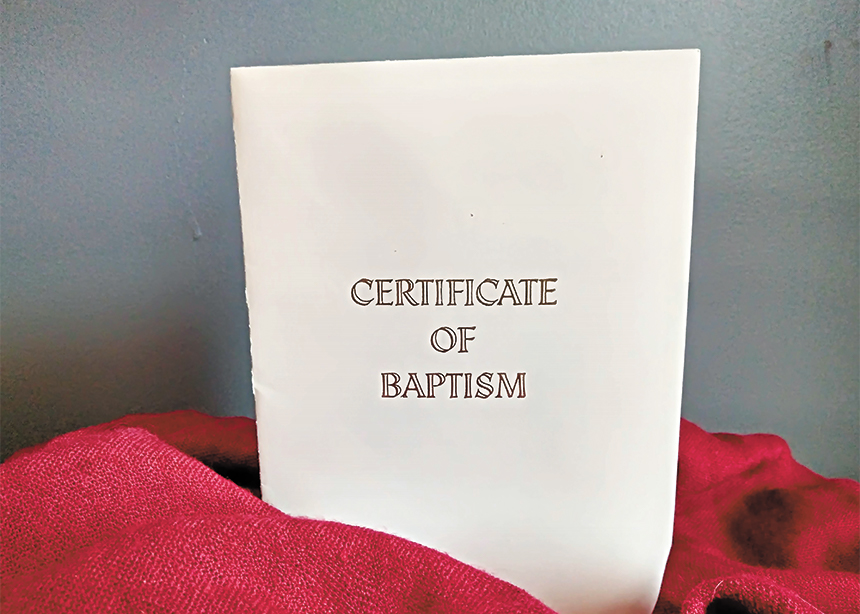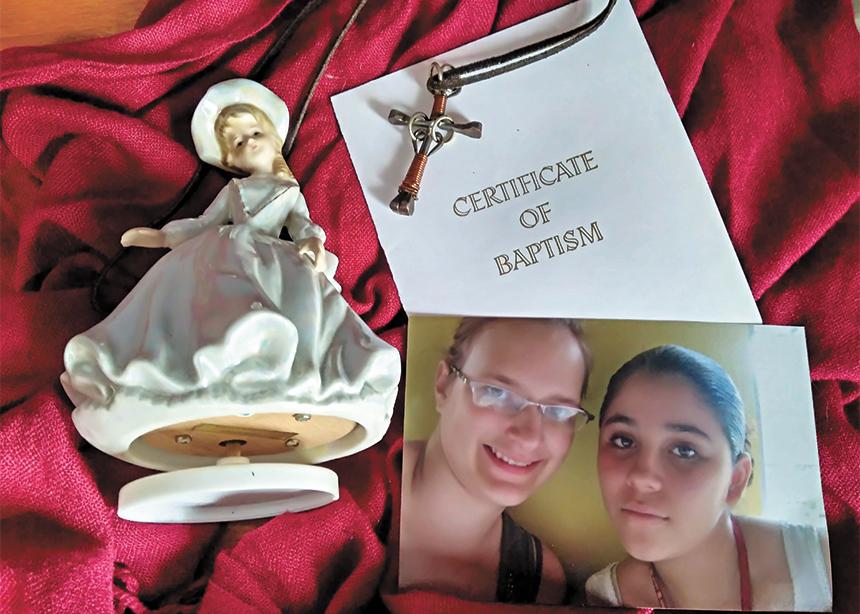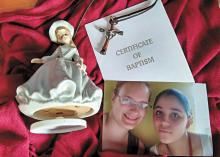“And Joshua set up at Gilgal the twelve stones they had taken out of the Jordan. He said to the Israelites, ‘In the future when your descendants ask their parents, “What do these stones mean?” tell them, “Israel crossed the Jordan on dry ground”’” (Joshua 4:20-22).
The crossing of the Jordan River was a key event in Israel’s history. As the Israelites found themselves on the other side, Joshua commanded the Israelites to take 12 stones from the river and carry them to their camp. Joshua set up the stones as a symbol of God’s faithfulness to them as they crossed into the promised land.
The pile of stones was just as central to this story as the physical crossing of the river was. It reminded the people of that day—the week after, the month after, the year after—until those who had gathered the stones had their own children and those children had their own children.
The remembrance of these stones, a physical representation, stood out for the children to ask, “Why are these stones here?” The stones cried out with Israel’s story that their God was faithful.
Looking for stones
But here we are. Our congregations are aging. It seems as though the church in North America is aging. Folks from the younger generation aren’t involved in church anymore. The church population is getting kind of old.
Yet we are called to further Christ’s church. Our congregations need to work at being sustainable and being a place that will continue on with the younger generations. Our congregations can do that by being vital. If the church continues to be vital in people’s lives, it will continue to be sustainable.
I don’t know how to make the church sustainable. And I have questioned whether the church is vital. And, many times in my life, I’ve seen the church population age and younger people dwindle away. Sometimes I do love to trash-talk about the church. But here I am: a young, under-30 person who is actively a part of the church. And it’s not just because I get paid to be here.
So, why am I part of the church? Why haven’t I given up on the church?
The Israelites were reminded of God’s vitality in their lives by creating a pile of stones. And so, I went searching for my own pile of “stones,” shown in the following photos. I don’t have 12, so four will have to do.
Dancing girl

This figurine reminds me of my grandma’s house. I remember my grandma, who was a single mother in the 1960s. The figurine reminds me of how she became a devoted follower of Jesus, beat alcoholism, spent all her time volunteering for her church and how she spoke about Jesus wherever she would go. It reminds me of my grandma, who knelt with me as I welcomed Jesus into my heart, as children in my context were taught to do. It reminds me of my grandma, who heard about my struggles in finding my identity as a pastor and said, “I wish you would have told me, I could have prayed for you.”
I have no doubt that my grandma was praying for me that whole time.
This figurine reminds me of my grandma, who, to me, embodies what the church should be. It reminds me of my grandma, who taught me that God is faithful.
Photo of Genesis

This is a photo of me in all my teenager awkwardness, with a Nicaraguan girl named Genesis. She was one of the first children to arrive at an orphanage where my dad and I worked. She and I became fast friends despite our language differences.
I promised Genesis that I would come back next year and visit her; I didn’t. I’ve thought about her often. I have no idea where she is, but I want to call her and tell her about the impact she made on my life. It’s very possible she doesn’t even remember who I am.
This photo reminds me of all the people we interact with in our lives, on whom we make a lasting impression without even knowing it. It reminds me that the Holy Spirit works in powerful ways that are beyond our control. This photo makes me hope that God was as faithful to Genesis, wherever she is, as God has been faithful to me.
Baptismal certificate

This baptismal certificate reminds me of the church I went to while growing up in Manitoba. I don’t have too many good memories of that place, but this is one that is very special to me.
I was 15 and asked to be baptized in the river at a provincial park near our house. I loved the outdoors. As I rose from the water, the church members, lined up along the shoreline, began singing “Amazing Grace.”
It was a congregation that always welcomed me back home. This certificate reminds me that this church did, in some roundabout way that I didn’t see then, nurture me into becoming a pastor. This certificate reminds me again and again of my baptism into Christ’s church, however messy it looked in my life during that time. It reminds me that God is faithful.
Cross necklace

I received this necklace from someone whose house I was billeted at during a choir tour. I don’t remember anything about him other than his generosity to give me a gift after barely even knowing me.
This necklace still has a special place in my heart. I often wear it at times when I need to feel God’s presence with me, whether it’s attending a visitation for a funeral I’m officiating for someone I’ve never met, or a workshop I’m doing for a room full of pastors who seem much wiser—and older, and “maler”—than me.
This necklace weighs on my neck and reminds me that God is there with me. It reminds me that the presence of God goes with me wherever I may be. It reminds me that God is faithful.
What are the stones of remembrance in your life? What are the rocks that point to God’s faithfulness? Why have you stayed in the church for as long as you have? Why is your faith vital to you? I invite you to share these stories with your children, with your grandchildren. Ask them to share their stones of remembrance with you.
The Israelites did not become the people of God easily. They became God’s people through the experience of redemption from Egypt, the experience of their time in the desert and the experience of crossing the Jordan River. Israel became the people of God through these, as they witnessed God’s faithfulness over and over again.
Joshua built the pile of stones to remind the Israelites why God was vital in their life. Like them, we can talk, share our “stones” and our stories about how God has been faithful to us.
These stories shape who I’ve become and they are a part of why I show up to church on a Sunday morning. I don’t show up because there is flashy worship that catches my attention. I don’t show up because there are a bunch of other young people here that are my age. I show up because these stones in my life have shown me that I need to be with the people of God, and I’m not going to do that by sleeping in every Sunday morning.
I show up because it is in the church where I have seen God active. I show up because it is in the church where I have seen the Holy Spirit moving. I show up because being with the people of God and hearing their stories tells me what the Israelites learned over and over again: God is faithful.
Sure, church is messy. We fight. We are impatient with one another. We are tired of committee meetings. We roll our eyes when certain people are talking and we zone out perhaps more often than we should.
But we also fall in love, cry with each other, dedicate our babies, and give packages to our youth in the hope that they will know that we love them even though they are distant. We collect food for the hungry and we feed our own souls.
I believe that you aren’t able to show others that the church is vital unless you first think about how the church is vital to you.
I still don’t know how to make the church sustainable. But I do know that I’m here because God has been faithful in my life. I know that it is better for me to be here listening to the ways that God has worked in people’s lives. And I wonder: if we continue to tell others about how the church is vital to us, perhaps the sustainability part will work itself out.
Danielle Raimbault is a co-pastor of Preston and Wanner Mennonite churches in Cambridge, Ont. She preached this sermon to both congregations in a series based on a covenant the two churches formed to guide their relationships as they share pastors.
For discussion
1. What are your “stones of remembrance”—the artifacts or stories that remind you of how God has been faithful in your life? Are they portrayed in your photo albums? What is the advantage of having your own “pile of stones” out on display where you can see them daily?
2. As you think of your church building, what are the objects or photos on display that remind people of God’s past faithfulness to the congregation? How often is attention drawn to these items? Does a Mennonite museum do a good job of reminding us of God’s faithfulness?
3. Danielle Raimbault wonders about the sustainability of the church in North America and admits she doesn’t know how to make it sustainable. What questions do you have about the future of the church? How does reminding ourselves of God’s faithfulness in the past help us deal with fear about the future?
4. Raimbault writes, “[I]t is in the church where I have seen God active.” Where have you seen God active in the church? In what ways is the church vital for you? How can the church better remind itself of times when God was faithful?
—By Barb Draper



Add new comment
Canadian Mennonite invites comments and encourages constructive discussion about our content. Actual full names (first and last) are required. Comments are moderated and may be edited. They will not appear online until approved and will be posted during business hours. Some comments may be reproduced in print.